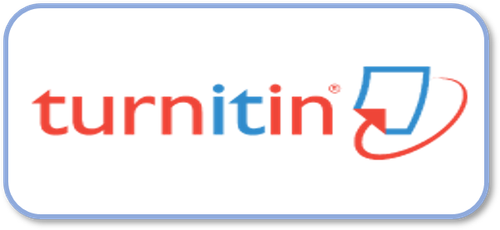Tourism Development Based On Sharia Models On Tourist Destinations In Padang City
DOI:
https://doi.org/10.24912/jm.v23i3.582Abstract
This study aims to make a description of attractions to tourist destinations in North Sumatra. Sharia area is in the object of observation in West Sumatra province. The research subject is a tourist destination in the city. Sharia description analysis method (comparing between reality and expectations) the potential of sharia tourism is carried out through, a tourism manager survey of tourists on visits to tourism sites, and local government. This research was conducted by spreading, questionnaire, interview, and observation. The method of analyzing of data-fired different methods than Levene’s test for equality of SPSS variances and software. The result of the research proved that all tourists’ variables attraction, amanitas, accessibility and ancillary shows of the values were lower than the hope Levene’s Test for equality of variances proved which are considerable.
References
Babin, B. J., and Anderson, R. E. (2014). on Multivariate Data Analysis Joseph F . Hair Jr . William C . Black Seventh Edition.
Battor, M., and Ismail, M. N. (2016). Halal tourism: Concepts, practises, challenges and future. Tourism Management Perspectives, 19, 150–154. https://doi.org/10.1016/j.tmp.2015.12.008.
BPS. (2018). Indonesia Statistic. Retrieved from https://www.bps.go.id.
Carboni, M., and Idrissi, M. (2016). Halal tourism de facto : A case from Fez. TMP, 19, 155–159. https://doi.org/10.1016/j.tmp.2015.12.007.
El-Gohary, H. (2016). Halal tourism, is it really Halal? Tourism Management Perspectives, 19, 124–130. https://doi.org/10.1016/j.tmp.2015.12.013.
Gmti. (2015). GMTI Report Global Muslim Travel Index (GMTI) 2015 Results. Retrieved from http://gmti.crescentrating.com/mastercard-crescentrating-global-muslim-travel-index-2015-gmti2015.html.
Hall, C. M., Sharples, L., Mitchell, R., Macionis, N., and Cambourne, B. (2003). Food tourism around the world. Food Tourism Around The World, 1–373. https://doi.org/10.4324/9780080477862.
Henderson, J. C. (2016). Halal Food, Certification And Halal Tourism: Insights from Malaysia and Singapore. Tourism Management Perspectives, 19, 160–164. https://doi.org/10.1016/j.tmp.2015.12.006.
Henderson, J. C., (2013). Tourism and Hospitality Research Population And Islamic. https://doi.org/10.1057/thr.2010.3.
Kadir, A. (2015). Laporan Akhir Kajian Pengembangan Wisata Syariah. Laporan Akhir Kajian Pengembangan Wisata Syariah, (Syariah Tourism), 1–201. Retrieved from http://www.ssrn.com/abstract=2916590.
Kearney, A. T. (2007). Addressing The Muslim Market: can you afford not to?, 1–19.
Kompas. (2016). Sumatra Barat Kota Destinasi Wisata Halal Dunia. Kompas. Retrieved from https://www.kompasiana.com/rendifebriaputra/sumatra-barat-kota-destinasi-wisata-halal-dunia_580a1dd8d07a613f21236056.
Mohsin, A., Ramli, N., nad Alkhulayfi, B. A. (2016). Halal tourism: Emerging opportunities. Tourism Management Perspectives, 19, 137–143. https://doi.org/10.1016/j.tmp.2015.12.010.
Mukhtar, A., and Butt, M. M. (2012). Intention To Choose Halal Products: The Role Of Religiosity. Journal of Islamic Marketing, 3(2), 108–120. https://doi.org/10.1108/17590831211232519.
Musa, G., Mohezar Ali, S., and Moghavvemi, S. (2016). Understanding Islamic (Halal) Tourism Through Leiperrs Tourism System. SSRN Electronic Journal, (March). https://doi.org/10.2139/ssrn.2813023.
Oktadiana, H., Pearce, P. L., and Chon, K. (2016). Muslim travellers’ needs: What don’t we know? Tourism Management Perspectives, 20, 124–130. https://doi.org/10.1016/j.tmp.2016.08.004.
Raj, R. (2012). Religious Tourist’s Motivation For Visiting Religious Sites. International Journal of Tourism Policy, 4(2), 95–105. https://doi.org/10.1504/IJTP.2012.048997.
Ryan, C. (2016). Halal tourism. Tourism Management Perspectives, 19, 121–123. https://doi.org/10.1016/j.tmp.2015.12.014.
Sai, Y. (2014). Policy, Practice and Perceptions of Qingzhen (Halal) in China. https://doi.org/10.15364/ris14-0102-01.
Yodhoyono, S. B. (2009). Law Of The Republic Of Indonesia No 10 of 2009 concerning tourism, (10).
Yousaf, S., and Xiucheng, F. (2018). Halal Culinary And Tourism Marketing Strategies On Government websites : A preliminary analysis. Tourism Management, 68(April), 423–443. https://doi.org/10.1016/j.tourman.2018.04.006.
Downloads
Published
How to Cite
Issue
Section
License
Copyright (c) 2019 Jurnal Manajemen

This work is licensed under a Creative Commons Attribution-NonCommercial-ShareAlike 4.0 International License.
This journal provides immediate open access to its content on the principle that making research freely available to the public supports a greater global exchange of knowledge.

This work is licensed under a Creative Commons Attribution-NonCommercial-ShareAlike 4.0 International License



















